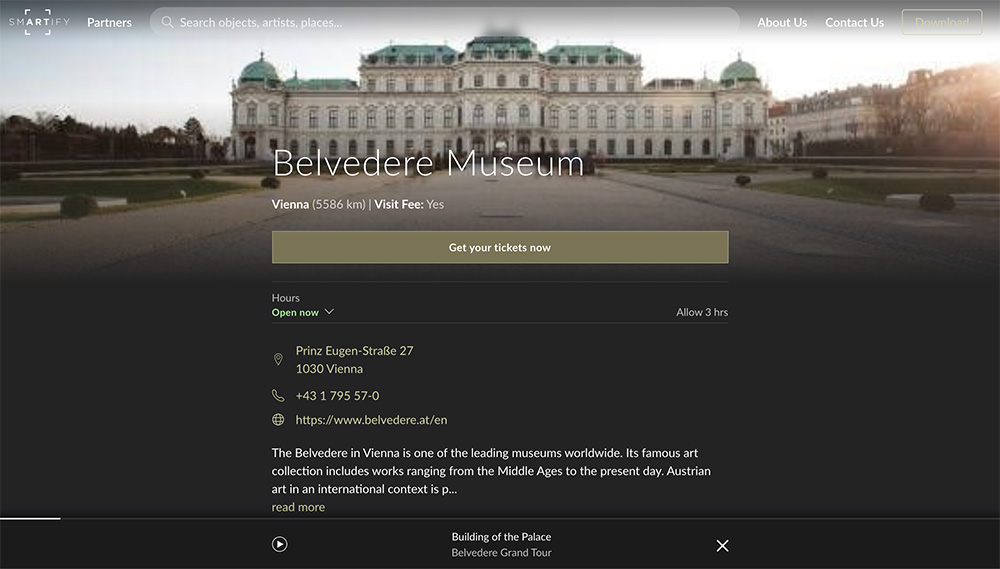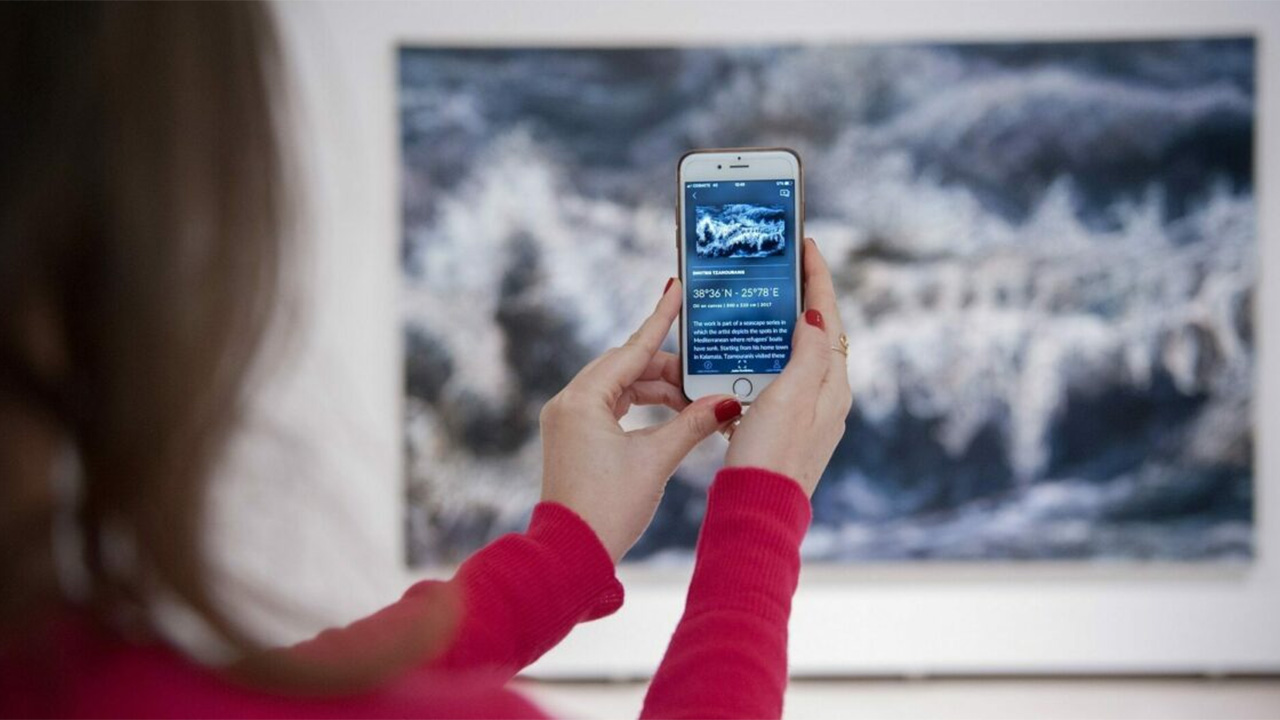In 2015, Smartify embarked on its mission to elevate museum experiences with the simplest of offerings: audio guides that visitors didn’t have to rent and return, but could easily access on their smartphones. To call up audio or information about an artwork at an exhibition, visitors simply launch the Smartify mobile app, scan the work on display with their device’s camera, and let the platform’s image recognition technology do the rest. Users can access these guides during or after visits; and partner institutions from the Los Angeles County Museum of Art to Amsterdam’s Rijksmuseum quickly saw the benefits of creating, disseminating, and crucially, owning their own content on the platform.
Since then, the app has blossomed in functionality. Scanning or searching for Dalí’s The Persistence of Memory, for one, brings up details about the artist and artwork, the venue where the piece hangs, and Dalí-related merchandise available to purchase on the museum’s e-commerce platform. Institutions can add a host of further options from wayfinding to donation notifications, and retrieve audience insights and analytics.
“It’s about making the visitor experience more seamless — a unified experience that can be accessed however you wish,” says Anna Lowe, Smartify’s co-founder and Director of Partnerships, “and capturing audience data in terms of how they engage onsite and offsite.”
Vitally, the Smartify solution for cultural institutions is not one-size-fits-all, but highly adaptable. Some museums may wish to load their entire collection onto the platform; others may build tours around a single exhibition. “Every museum is unique,” says Lowe. The company’s partnerships with some 200 museums worldwide have seen a variety of services deployed — from multi-language audio tours (for the Smithsonian) to augmented reality experiences (for the National Galleries of Scotland’s Ray Harryhausen exhibition).
Over the past year’s lockdowns, users continued “engaging with the app in different ways,” Lowe notes. This increased engagement and audience appetite has driven the need for more digital content, to which the platform is responding with upcoming original content created by an in-house production outfit. It’s yet another step closer to the comprehensive, enriching application for culture enthusiasts that Lowe and her co-founders envisaged in the first place. “We always wanted Smartify to be a single platform,” she says, “because that’s how audiences engage with digital cultural experiences.”
Here’s more of Jing Culture & Commerce’s conversation with Lowe on Smartify’s now and next.
For museums, what does a partnership with Smartify look like?
When we first work with a museum, we discuss what they want to achieve — it could be about offering audio guides to the visitor’s mobile or reaching audiences at home. The Smartify platform provides a toolbox that makes it easy for museums to build and manage their own guides in a drag-and-drop format, publish more information about their venue, schedule notifications — it’s completely up to them. The content goes live on the app, web app, and the museum’s own website. That is the starting point and then we can add e-shop functionality, donations, digital membership, or email capture.

Available on browsers, the Smartify web app offers functions similar to its mobile app — from ticketing to audio guides — and promises increased accessibility. Image: Smartify.org
How have the past year’s disruptions impacted the platform and your partners?
It has been a year of rapid change. There is now an acceptance that a museum has to operate both physically and virtually. To do this successfully, I believe museums need to adapt to platform-thinking, to make use of successful technology platforms where audiences already are. Over 2020, Smartify saw strong growth. We are now working on creating an even richer storytelling platform with a focus on the at-home experiences as well as onsite, and giving partners full control on monetizing that content.
What kind of audience engagement did you observe on the app throughout 2020?
We had increased engagement, something like a 400% increase. We released the Smartify web app last year, which meant people could also access everything in a browser without having to download the native app. In the past year, almost all our audiences were using the platform at home, using them almost like podcasts or video series, and museums responded to that by creating tours in different ways.
What do you make of how the museum sector has pivoted to digital over the past year?
There has been so much creativity and a lot of pressure. We really need to thank digital teams. Now, it is time to rethink the financial ecosystem around digital content in the long-term. For too long museums had the impression that all their online activities should be available for free because value was not placed on them by the museum. People are willing to pay for things they have time for and are interested in, and we can balance that with free content as well — just as we do already with physical exhibitions.
What are some future plans for Smartify?
The Smartify roadmap is always defined by the needs of our partner museums and end-users. Right now, we’re adding functionality so that museums can promote their online events and classes through the app. Version two of e-shop had a successful pilot last year in collaboration with the National Gallery and StoryFutures Lab at Royal Holloway University. We also have a new in-house content production team led by the fantastic Wouter van der Horst who was at the Rijksmuseum before, so we’ll be supporting museums in their content creation work.



